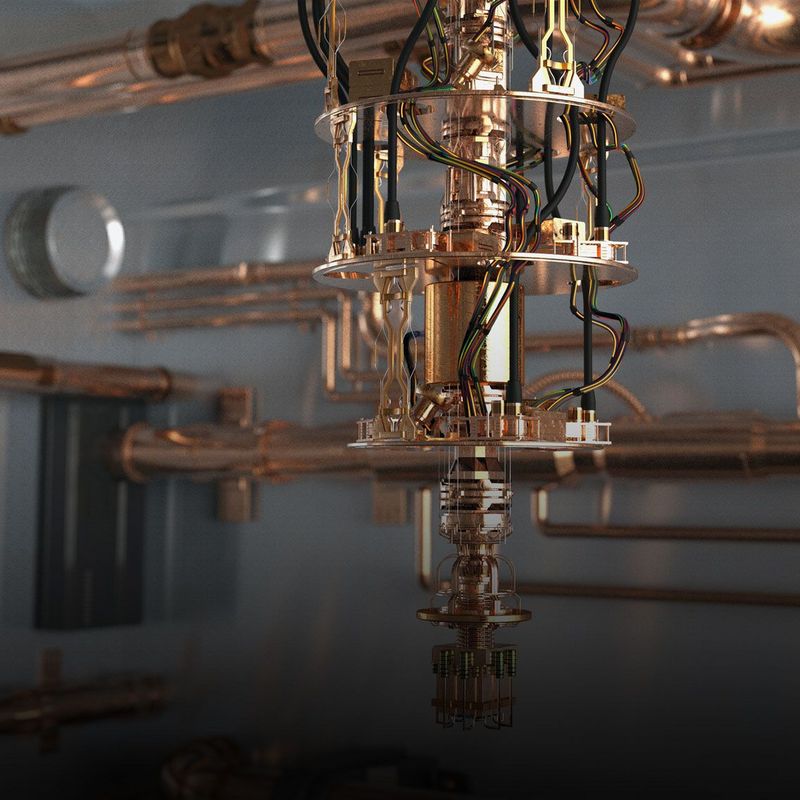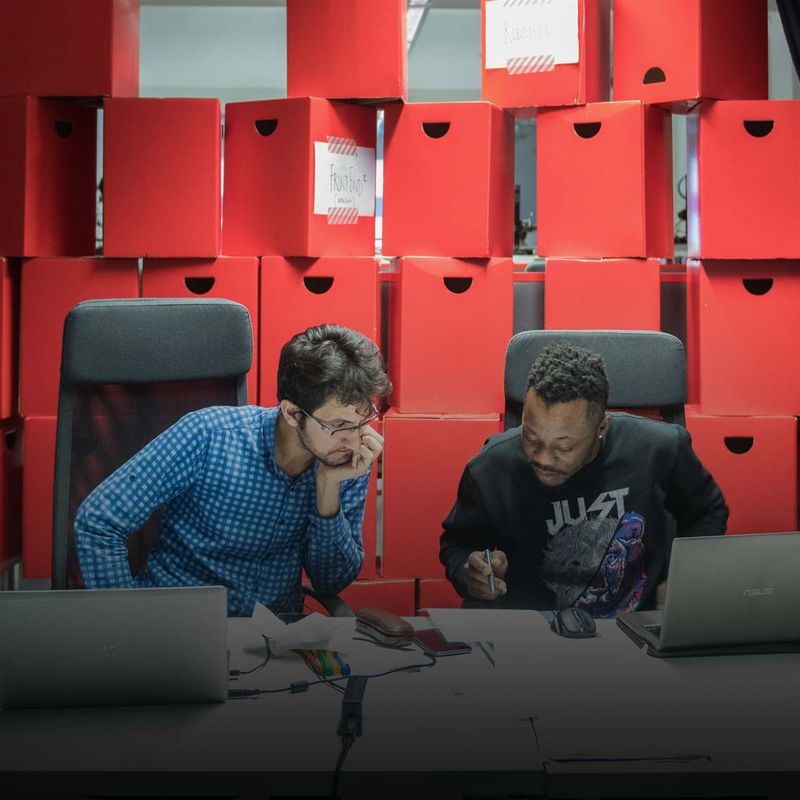23 May 2019
All the signs point to the electrification of personal mobility: If you want environmentally-friendly transport, there’s simply no ignoring the electric car – this has now been adopted as a self-evident truth by policymakers, society and even large parts of the automotive industry. And yet, battery technology is still hampered by technical limitations, especially in heavy goods transport. Which is why Toyota has been focusing on hydrogen drive systems for many years. German manufacturers are now also rediscovering fuel cell technology for themselves.
With the aid of batteries, it’s possible to get not only people but also goods and parcels from A to B in an environmentally-friendly way – as has been demonstrated by Deutsche Post’s use of street scooters. But it isn’t just delivery vans that are now switching to electric power. Manufacturers such as Daimler and Volvo have also developed electric lorries. However, electric trucks are primarily meant for use in urban delivery transport. In most cases, today’s batteries aren’t powerful enough for long-haul journeys. Their size and weight require sacrifices in a lorry’s freight-carrying capacity, and their cost represents a real drain on the finances of logistics companies. It’s here that the fuel cell offers a viable and clean alternative, says Christian Förster, an electric mobility expert at TÜV NORD.
The technology was used way back when to supply the astronauts of Apollo 11 with electricity on their lunar mission: In a chemical process, hydrogen and atmospheric oxygen are converted into electricity, which can then be used, for example, to drive an engine. Fuel cell vehicles are also, strictly speaking, electric vehicles. But with one crucial difference: they already have a longer range than a battery car and can be refuelled almost as fast as a conventional combustion engine. And they offer a further advantage in comparison to purely battery-powered vehicles: “Hydrogen as an energy source for fuel cells can be supplied in a distribution network very similar to that of diesel at a petrol station, meaning that we wouldn’t have to make fundamental changes to the classic motorway refuelling structure in this sector,” stresses Christian Förster. Unlike with electric car charging stations, there’s no need to lay miles of power cables. Instead, the hydrogen can be produced locally or delivered to the pumps in tankers. But hydrogen pumps are still a global rarity. In Germany, hydrogen is available from around 60 public filling stations. Meaning that Germany has the second largest network in the world behind Japan, with 96 hydrogen filling stations – although, compared to 14,500 conventional filling stations and more than 17,000 electric charging points, they are still very few and far between.
Patchy network of filling stations
Nor is a patchy infrastructure the only obstacle in the way of hydrogen-powered transport. The few available fuel cell vehicles, such as those offered in series production by Toyota, Hyundai and Honda, are still more expensive than their electric counterparts, which are themselves far from cheap. And the efficiency of a hydrogen-powered car is also significantly lower than that of a battery-driven vehicle. This is because generating hydrogen and converting it into electricity uses a lot of energy. “One kilowatt hour of energy from a renewable source will get me more than twice as far in a battery-electric vehicle than it would in a fuel cell equivalent,” electric mobility expert Förster explains.
“One kilowatt hour of energy from a renewable source will get me more than twice as far in a battery-electric vehicle than it would in a fuel cell equivalent.”
High production costs and a dearth of filling stations are also highly likely to be factors behind the reluctance of German car manufacturers to embrace the fuel cell. While it is true that VW, Audi and Daimler have been researching the technology for decades and have already developed various prototypes, to date, only Daimler has produced a series-production hydrogen car with the GLC F-Cell, which customers can currently only rent but not buy.
Toyota places its faith in the fuel cell
The technology is being actively pursued, especially in the Far East. Toyota, in particular, is committed to the fuel cell. “We believe we need both: the battery and the fuel cell,” Toyota spokesman Hisashi Nakai told the “Welt am Sonntag” newspaper, reiterating the company's determination to carry on along its set path. The Japanese carmaker launched its first mass-produced hydrogen estate car, the Mirai, at the end of 2014. In economic terms, however, success has been a long time coming. Since its introduction, only some 7,000 vehicles have been sold worldwide. Even so, Toyota still believes that the hour of the fuel cell has come. The car manufacturer aims to increase sales of hydrogen vehicles to 30,000 per year as early as 2020. And with the higher volumes production costs are also expected to fall, and fuel cells will no longer be used only in high-end limos or SUVs. In addition to hydrogen-powered cars, the Japanese are also developing forklifts, trucks and buses with the same fuel source. At next year's Summer Olympics, Toyota will supply 100 hydrogen buses designed to ferry guests from around the world through the Japanese capital. In California, the manufacturer has been testing a fuel cell lorry since 2017. The hydrogen-powered truck can travel up to 480 kilometres on one tank and move a total weight of more than 36 tonnes. The intention is for the trucks to go into regular use in the ports of Los Angeles and Long Beach from the end of the year.
Automaker Hyundai, which has already had mass-produced fuel cell cars in its range for a number of years, has also developed a hydrogen-powered lorry. The Hyundai Fuel Cell Electric Truck weighs 34 tonnes and is expected to manage around 400 kilometres on a single tank. As of 2019, the South Koreans aim to join forces with Swiss hydrogen company H2 Energy (H2E) to test a fleet of 1,000 lorries over five years. The carmaker will have invested a total of six billion Euro in hydrogen-powered vehicles by 2030 and aims to have produced half a million vehicles by that date.
World first between Cuxhaven and Buxtehude
But it's not just on the road that experiments with the fuel cell are taking place: Toyota is also supporting the round-the-world tour of the first hydrogen-powered ship. The electric-powered “Energy Observer” catamaran works with both solar energy and a system that generates carbon-free hydrogen from seawater. After a fully energy-autonomous circumnavigation of the world, it is scheduled to arrive in Tokyo just in time for the Olympics.
© Coradia iLintThe first hydrogen train in the world operates the "Coradia iLint" between Cuxhaven and Buxtehude
The technology is also being deployed on the railways. In Lower Saxony, passengers have been able since September 2018 to travel the 100-kilometre route between Cuxhaven and Buxtehude on the world's first hydrogen-powered train. Where diesel trains otherwise roar and rumble along, the whisper-quiet “Coradia iLint”, whose safety reports have been collated by TÜV NORD, is now rolling down the line. Instead of soot, nitrogen oxide and CO2, it merely blows water vapour into the air. “Hydrogen is a real low-emission and efficient alternative to diesel,” says German government rail commissioner Enak Ferlemann. The eco-friendly hydrogen trains are set to replace diesel locomotives in particular on branch lines where the use of overhead lines isn’t viable – for example, between Berlin and the Brandenburg town of Barnim, where the plan is to deploy a fuel cell train as of 2022. In Lower Saxony, two hydrogen trains are still being trialled as “pre-production models”. The official launch date has been set for the end of 2021, when a further 14 hydrogen-powered trains are due to go into operation. The Lower Saxony Ministry of Transport is stumping up some 81 million Euro to buy them. In the next 30 years, all 120 diesel trains operated by the state’s local rail operator, Landesnahverkehrsgesellschaft Niedersachsen (LNVG), could eventually be replaced by environmentally-friendly alternatives.Plans to use fuel cell trains have also been drawn up in Hesse. The Verkehrsverbund Rhein-Main has ordered 27 fuel cell trains from Alstom, which are expected to be plying routes throughout the Main-Taunus district from the end of 2022.
Japan on the road to the hydrogen economy
International interest in hydrogen withdrawal is similarly keen. According to the manufacturer Alstom, inquiries have been forthcoming from countries such as Canada, Indonesia and Japan. This should hardly come as a surprise: The government of the island nation aims to make hydrogen the energy source of the future and is heavily subsidising relevant projects, alongside the purchase of a hydrogen-powered car. In this way, the government aims to introduce around 800,000 fuel-cell vehicles onto Nippon's roads by 2030. To this end, the hydrogen supply is also set to be drastically increased: from 200 tonnes per year (the 2017 baseline) to 4,000 tonnes in 2020 and to 300,000 tonnes in 2030. The intention is to use hydrogen not only to power cars but also to supply homes with electricity and heat. High prices and low levels of efficiency mean that this is currently only partially viable. But this is set to change with the increasing spread of renewable energies. So that renewable electricity is not wasted on particularly sunny or windy days because not enough people are using their washing machines, the idea is to temporarily store the excess supply in hydrogen. “The use of hydrogen is only going to be effective if new energy sources become widely available,” Toshiki Shimizu, head of the smart energy systems division at Panasonic, told the Stuttgarter Zeitung.
“The use of hydrogen is only going to be effective if new energy sources become widely available.”
Japan's huge neighbour China also wants to push ahead with the spread of the fuel cell. In 2018, the Chinese state invested 11 billion Euro in subsidies for the technology – and this figure is only set to increase. By 2030, it is anticipated that there will be 3,000 hydrogen filling stations in China. Car manufacturers are also putting hydrogen on their agenda: Great Wall Motors, for example, has hiked up its investment in fuel cell technology. And start-up Grove Hydrogen Automotive unveiled its first hydrogen-powered production vehicles in Shanghai at the end of April.
Bosch and Audi laying plans for the fuel cell
German manufacturers are now also rediscovering fuel cell technology for themselves. For instance, as the car manufacturer recently announced, Audi intends to invest more money and capacity in its development. Later this year, the Ingolstadt-based company intends to develop a first prototype with the aim of launching a fuel cell car in 2021 – albeit initially in small quantities. Large-scale production is proposed for the middle of the next decade. Bosch also wants to be at the forefront of fuel cell development. The supplier plans to have the mass production of fuel cells up and running by 2022. Bosch sees huge potential here, especially in the field of commercial vehicles. The group calculates that up to 20 percent of all electric vehicles could be powered by fuel cells by 2030.



